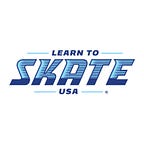Skating to Great
Celebrating the success of Learn to Skate USA
From the summer 2021 issue of Learn to Skate USA The Magazine
By Taylor Dean
On June 1, 2016, Learn to Skate USA launched with a mission to provide a fun and positive experience that will instill a lifelong love of skating. This year, the program celebrates six years of teaching children and adults empowerment, confidence and personal strength through skating lessons.
Learn to Skate USA launched as an enhanced iteration of U.S. Figure Skating’s successful Basic Skills Program, which taught nearly 3 million people how to skate since 1968. But the history of learning to skate goes far beyond the 1960s.
Skating in the 20th Century
In the 1920s, parents put their kids on the ice as young as 3 or 4 years old. Experts recommended they learn to skate at indoor facilities and move to outdoor venues when they could bear the cold and wind. Even back then, adults of all ages were encouraged to take to the ice for the health benefits and the pure joy one can get gliding across the ice.
Since there was no official grassroots program with U.S. Figure Skating, skaters took their first steps with their parents, in private lessons, at a local club program or even as adults on their own. Those who dreamt of the freedom of the ice could check out books from the library covering the basics of ice skating.
Group Lessons: A Learn to Skate Standard
As figure skating grew, so did interest in learning to skate. Clubs organized “Learn to Skate Day” and “Learn to Skate Week” clinics, inviting beginning skaters to take lessons in a group setting. Clubs offered learn to skate group classes instructed by professionals to encourage people to become members.
It was in the late 1950s that group classes became the standard way of teaching new skaters.
In 1968, John McNair and Robert Ogilvie formulated the United States Figure Skating Basic Tests program, which included publishing an instructional guide with images to help instructors teach students the basics. Titled Basic Ice Skating Skills, McNair and Ogilvie advertised the guide as a way for non-skaters to learn to basics and work their way to test the preliminary ice dance and figure tests.
With this publication, the Basic Skills Program was born.
In August 1985, U.S. Figure Skating announced the formation of “Skate With U.S.,” a learn to skate initiative inviting thousands of skaters of all ages to lace up their skates and learn basic skills through the revised 1968 curriculum. While the initiative still operated under the auspices of U.S. Figure Skating, the new Basic Skills curriculum focused mainly on grassroots skating.
The new curriculum included an instructor’s manual, administrative manual and other resources to help clubs manage their learn to skate program. As the program evolved into the 1990s and early 2000s, Simon created a CD software program to help clubs better understand the skills to teach.
New Basic Skills members got welcome packets that included a record book, membership card, stickers and more. As skaters progressed through the Basic Skills levels, instructors awarded them patches to sew onto their favorite skating jacket. With Snowplow Sam introduced as the program’s “bear-y great” mascot, kids were excited to learn to skate and achieve their goals.
Learn to Skate USA Launches
On June 1, 2016, Learn to Skate USA launched as a rebrand of U.S. Figure Skating’s Basic Skills Program with a mission to provide a fun and positive experience that will instill a lifelong love of skating. The biggest difference from the old program was getting endorsements from U.S. Figure Skating, USA Hockey and US Speedskating, the three ice sport national governing bodies that rely on skaters to have basic skating skills before advancing.
“Although there was a curriculum directed toward each facet of ice sports, it was a true challenge to convince a hockey enthusiast that the U.S. Figure Skating Basic Skills Program would make their skater a better hockey player,” said Cathryn Schwab, the chair of the Learn to Skate USA subcommittee. “All that changed in 2016 with the rebrand and outreach of Learn to Skate USA. The broader appeal of Learn to Skate USA has allowed membership growth and exposure like never before.”
Learn to Skate USA, powered by Toyota engages members on the ice and off through activities, a member-specific app to track progress and earn badges, a solid social media presence and a quarterly magazine. The program grew beyond Basic Skills and Snowplow Sam and includes more than a dozen curriculums for skaters to learn, including Theatre On Ice and Adult and Speed. An Adaptive Skating and Special Olympics curriculum tailored toward individuals with disabilities ensures everyone can learn to skate, regardless age or ability. Events like SkateFests and Adaptive Skating clinics take place annually to welcome as many people to the ice as possible.
Since its inception, Learn to Skate USA has been successful in its mission, thanks to every director, instructor, the business development specialists and everyone else behind the scenes helping the program grow. The hard work by everyone involved came to fruition in the 2018–19 season, when Learn to Skate USA broke its membership record, welcoming more than 140,000 skaters to the ice. This past season, the program shattered its membership record again, this time with 167,725 in 2021–22.
From learning how to skate alone on frozen ponds to joining a standardized nationwide program, learning how to skate has come a long way in providing endless opportunities. Whether one is interested in recreational skating or has Olympic aspirations, Learn to Skate USA can help make one’s dreams come true.
